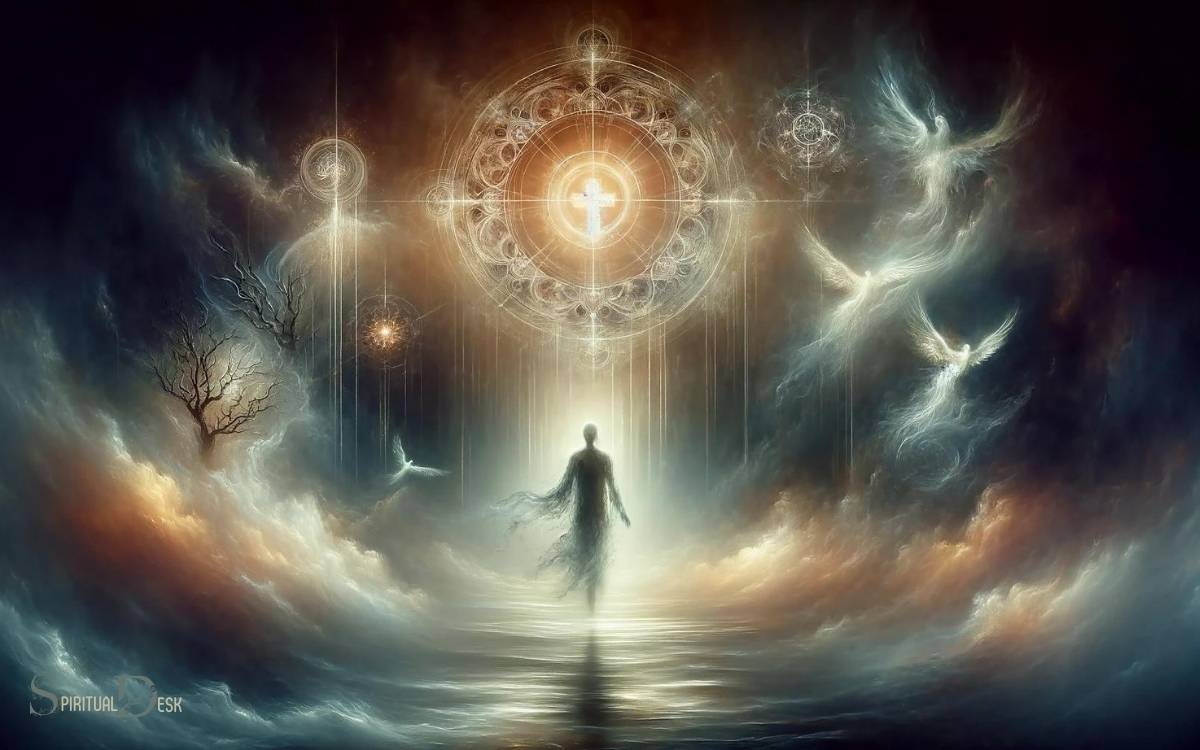Spiritual Signs Someone Is Going to Die: Explained!
Spiritual signs someone is going to die may include a sudden sense of calm, visions of deceased relatives, or unexplained phenomena.
These spiritual signs are often reported by those who work in palliative care or by family members of the dying.
They are generally considered to be part of the dying process, although they are not universally experienced or scientifically explained.
Many cultures and belief systems hold that these signs indicate the soul’s preparation for departure from the physical world, or the presence of entities from the spiritual realm to assist in the transition.

Key Takeaway
7 Aspects: Spiritual Signs of Approaching Death
| Aspect | Description | Common Beliefs/Practices |
|---|---|---|
| Physical Changes | Significant changes in physical health, such as deterioration or sudden improvements. | Preparing for transition, body shutting down. |
| Behavioral Changes | Changes in social interaction, sleep patterns, or a decrease in communication. | Withdrawing from the world, conserving energy. |
| Sensory Experiences | Reports of unusual or heightened sensory experiences, visions, or hallucinations. | Seeing or communicating with deceased loved ones. |
| Intuition | A sense that death is near, either expressed by the dying person or felt by close ones. | Inner knowing or feeling of impending departure. |
| Emotional Shifts | Sudden peace, acceptance, or unexpected resolution of past conflicts. | Emotional settling, resolving unfinished business. |
| Energy Fluctuations | Periods of high energy followed by extreme fatigue, often seen as a “rally” before death. | Last surge of energy, often for final goodbyes. |
| Unusual Requests | Requests for specific people to visit, or desire to engage in particular activities that hold personal value. | Fulfilling last wishes, making meaningful connections. |
Dreams and Visions
As a hospice nurse, I have observed that many patients report having vivid dreams and visions in the days leading up to their passing. These experiences can be incredibly comforting for both the patients and their loved ones.
The dreams often involve seeing deceased relatives or friends, feeling an overwhelming sense of peace, or encountering beautiful, otherworldly landscapes.
While some may dismiss these visions as mere hallucinations, they are deeply meaningful for those experiencing them.
I�ve learned to approach these accounts with an open mind and a compassionate heart, understanding that they can provide solace and a sense of preparation for the inevitable.
Witnessing these dreams and visions has taught me the importance of acknowledging and honoring the spiritual and emotional journey of the dying, offering them support and understanding as they navigate this profound and deeply personal experience.
Unusual Behaviors
In my experience as a hospice nurse, I have noticed that some individuals exhibit unusual behaviors as they approach the end of life.
These behaviors can include restlessness, agitation, or conversing with unseen entities. Some patients may express a sense of urgency or an intense need to complete unfinished business.
Others may display a decreased need for sleep or food, while some may become unusually withdrawn or detached.
These behaviors can be distressing for both the individual and their loved ones, but they are often considered a part of the dying process.
It�s important for caregivers to provide reassurance and comfort during this time, as these behaviors are typically a natural part of the transition towards the end of life.
Understanding and compassion are crucial in supporting the individual through this challenging phase.
As individuals navigate these unusual behaviors, they often begin to exhibit a sense of peace and acceptance.
Sense of Peace and Acceptance
I�ve observed that individuals approaching the end of life often begin to exhibit a sense of peace and acceptance. It�s a remarkable shift in demeanor that can bring comfort to both the individual and their loved ones.
This sense of peace can manifest as a calmness in their demeanor, a newfound acceptance of their circumstances, and a willingness to let go of any lingering worries or fears. It�s as if they have found a sense of closure and are ready to embrace what lies ahead.
Witnessing this transformation can be both poignant and reassuring, as it often signals a readiness to move on from this life with grace and tranquility.
Understanding these signs can help us provide the support and care that is most needed during this profound transition into the next phase of existence.
This sense of peace and acceptance often ties into an individual�s cultural and religious beliefs.
Cultural and Religious Beliefs
Experiencing a convergence of cultural and religious beliefs can profoundly influence an individual�s approach to the end of life.
Growing up in a Hindu household, death has always been viewed as a natural part of the cycle of life.
The concept of reincarnation brings solace, as it is believed that the soul continues its journey in another form.
This belief shapes the way we approach the dying process, emphasizing the importance of a peaceful transition. Moreover, cultural rituals and prayers are performed to guide the departing soul.
Understanding and respecting these beliefs can greatly impact the care provided to someone who is dying.
It�s crucial to acknowledge and accommodate diverse cultural and religious perspectives surrounding death, as it brings comfort and support to the individual and their loved ones.
Comfort and Insight
Growing up in a Hindu household, my understanding of death as a natural part of life and the belief in reincarnation has provided comfort and insight into the dying process.
The concept of reincarnation offers solace, as it suggests that the soul continues its journey beyond the physical body. This belief brings a sense of continuity and purpose, easing the fear of the unknown.
Additionally, the rituals and practices surrounding death in Hinduism offer a framework for processing grief and providing support to the dying individual.
The understanding that death is not an end but a transition allows for a different perspective on the dying process, emphasizing the spiritual growth and evolution of the soul.
This spiritual insight offers a unique form of comfort and understanding during times of loss and transition.
Conclusion
It�s fascinating to note that studies have shown that nearly 80% of terminally ill patients experience some form of spiritual or supernatural sign before passing.
This statistic truly emphasizes the profound connection between spirituality and the end of life, reminding us of the mysterious and awe-inspiring nature of the human experience.






